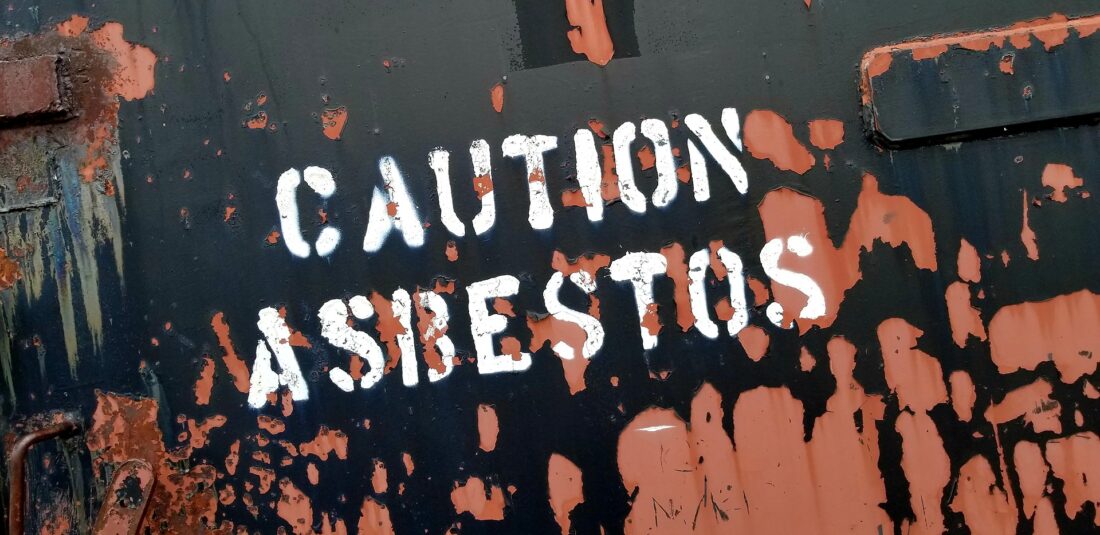Asbestos Exposure: From Industrial Settings to Old House Renovations
 Asbestos is a virtually indestructible naturally-occurring fibrous mineral that resistant to heat, fire, and chemicals and does not conduct electricity. It has been widely used in a variety of industrial materials and equipment and included as a material in many home products for more than a century.
Asbestos is a virtually indestructible naturally-occurring fibrous mineral that resistant to heat, fire, and chemicals and does not conduct electricity. It has been widely used in a variety of industrial materials and equipment and included as a material in many home products for more than a century.
Known in various forms and used for different purposes, asbestos is so common that everyone has been around it at some point. However, people at greatest risk of exposure are those who worked in an industrial workplace, construction, maintenance, heavy industry, and military veterans. When asbestos fibers are inhaled, they become lodged in the lungs and tissue, causing inflammation, scarring, and eventually genetic damage that can induce the development of cancer over time.
Over half of the people who are currently at risk for mesothelioma – an incurable cancer caused by inhaled asbestos fibers – came in contact with asbestos in the workplace – according to the U.S. National Institutes of Health. As for the remaining, they underwent other types of asbestos exposure, such as:
- Environmental – from nearby operations involving asbestos, such as mining or construction.
- Secondary – via contact with family members whose work clothes were laden with asbestos dust. During the last century, secondary exposure mostly occurred when a person who was exposed to asbestos on the job brought home carcinogenic fibers by carrying them in their hair or on their clothes. Microscopic asbestos fibers can then settle in bedding, blankets, carpets, couches, and other furniture. Family members who use any of these contaminated items could become exposed.
- Domestic – by inhaling asbestos fibers that came off damaged or old building materials. Asbestos was also included in many products just as a filler or binder. For this reason, asbestos products can be found in residential structures built in or before the 1970s. Thus, the possibility of dealing with asbestos exposure in your own home probably seemed far-fetched, but it is now the reality that many are facing.
Do you dream of buying an old house, and transforming it into the cozy, well-designed home? Dangerous building materials may lurk in your home’s flooring, walls, or ceilings, so before you get started on your next major home renovation, keep a vigilant eye out for warning signs of these home hazards.
Friable vs. Non Friable Asbestos
Asbestos is composed of fine fibers shaped like needles that are so tiny that people usually cannot see them. If asbestos materials are ripped or otherwise damaged, these fine needle-like fibers are sent into the air and can be easily inhaled. Often, the effects of long-term exposure to asbestos don’t show up until 10 to 50 years after exposure, which can increase the difficulty of an accurate diagnosis since patients may not have noticeable symptoms until the disease is in its advanced stages.
- Friable asbestos refers to asbestos that can be easily crushed, pulverized, and crumbled by hand
- Non-friable asbestos is when the fibers are mixed and sealed in with other materials like cement
Friable asbestos allows the fibers to be easily released into the air, whereas non-friable is tightly bound and the asbestos fibers will not pose any threat until the material is disturbed.
The Top 3 Mistakes to Avoid When Renovating an Old Home
Although renovating an old home takes a lot of careful consideration and serious planning, most of the homeowners jump into an all-out restoration undertaking without having any clue as to what they are up against or getting themselves into.
Mistake 1: Not researching your house history
As a new homeowner, you are probably aware that regardless of whether any refurbishment work is due to take place, you have a requirement to determine if asbestos is present within your house and if so where it is likely to be. This may involve reviewing the age of the building, records for the building including the architect’s plans/drawings, records of previous asbestos removal works, and any previous surveys of the building.
Mistake 2: Not carrying out conducting a risk assessment
If asbestos is present, assess the risk of the likelihood of anyone being exposed to fibers from these materials and prepare a plan setting out how the risks from the materials are to be managed, with the help of a team of qualified Asbestos Risk Assessment Consultants.
Mistake 3: Believing that you can do everything by yourself
There are many sources of information on doing home renovations and DIY projects and saving money doing the work yourself is good. However, the issue of hazardous materials removal, including asbestos, in a home requires specialized equipment and process to prevent cross-contamination or the release of airborne asbestos fibers into your home which can put your entire family at risk.
Where Could I Find Asbestos in My Home?
Considering its broad use in home construction and building materials for such a long period of time, finding asbestos in a property is fairly common. There are lots of places where you can find asbestos in your home as it was processed and mixed with materials to produce a variety of products. Examples include:
- Fibrous cement sheeting
- Carpet and vinyl underlay
- Lino flooring and tiles
- Corrugated asbestos sheeting
- Loose insulation
- Heater and stove insulation
- Fencing
- Eaves
- Gutters
- Chimney flues
- Pipes insulation
What to do if you find asbestos in your property:
- Do not disturb the asbestos – including vacuuming, sweeping, or attempting to remove the asbestos yourself) and don’t saw, sand, scrape, or drill holes in asbestos materials;
- Contact a professional inspector to determine the risk and the action that should be taken;
- Have a licensed professional complete any remediation or asbestos abatement activity.
You can order a special asbestos inspection that assesses the potential hazard and airborne presence of asbestos, identifying exactly where asbestos is present and whether it needs to be remediated. Several solutions can fix the problem without having to spend several thousand dollars removing the asbestos completely, including sealing, encapsulation or enclosing.
About the author:
Eddie Perry is a staff member at the Environmental Litigation Group, P.C., a law firm based in Birmingham, Alabama, a law firm focused on handling chemical toxic exposure cases and helping family members and patients diagnosed with cancers resulting from occupational exposure to certain carcinogens, including asbestos.









